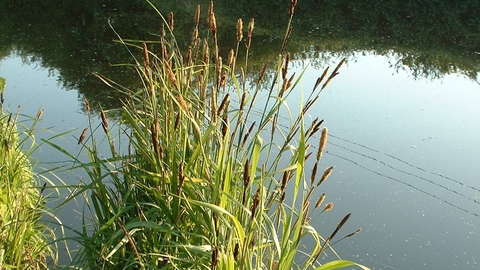
©Neil Wyatt
Greater pond sedge
Scientific name: Carex riparia
A tussocky sedge, Greater pond sedge has stout, upright flower spikes, strap-like leaves and triangular stems. It prefers lowland wetland habitats on heavy soils.
Top facts
Category
Stats
Height: up to 1.2mConservation status
Common.
